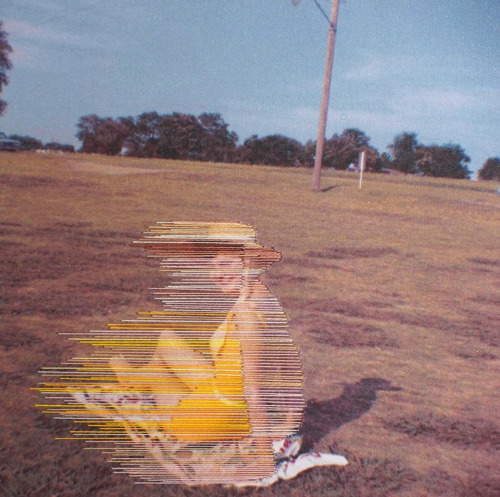HI EVERYONE HI HAPPY FRIDAY! The sun is shining, the birds are singing, and I am trying to stay positive before I have to spend a portion of the weekend reading Elon Fcuking Musk’s fcuking biography (there are strong professional reasons why this is necessary; I am not *that* sort of masochist) – how are YOU? What is going on in YOUR world?
Don’t worry, I don’t expect you to tell me – we don’t have that sort of relationship, after all – but this is the sort of ‘caring interaction’ I am increasingly informed is required if you want to ‘grow your newslettering community’. Am I doing it right?
I am still Matt, this is still Web Curios, and if any of you have any JUICY INFORMATION as to exactly how many people the BP guy was boning then I am ALL EARS.

THE SECTION WHICH IS GENUINELY SLIGHTLY PUZZLED ABOUT HOW DOGS BECAME THIS WEEK’S BURNING CULTURE WARS ISSUE HERE IN THE UK, PT.1:
- Chat2024: I was previously pretty relaxed about next year’s US elections – and tbh I’m still relaxed, it’s not my fcuking problem and we’re all going to die anyway so, well, wevs! – but over the course of the past month or so I have become…somewhat more concerned that several tens of millions of people are going to do something incredibly stupid (again). Still, we’re still at the ‘let’s pretend it’s going to be anything other than a miserable contest between two nonagenarians’ stage of things, which means that there are multiple candidates vying for attention and airtime and with THOUGHTS AND VIEWPOINTS that you might want to consider (if you’re a North American, at least) – and now, thanks to the MAGIC OF MODERN TECHNOLOGY, there’s a simple and easy way of doing so…VIA THE MEDIUM OF AI! Chat2024 is a PR/marketing project by a company called Delphi, which it may not surprise you to learn wants to sell you DIGITAL CLONES of yourself, and it basically lets you ‘interrogate’ all of the potential candidates for the 2024 sh1tshow in one fell swoop. Type in your questions, and you’ll get a selection of different answers from the ‘candidates’ (or more accurately the chatbots based on their policies) which, so the press release almost-inevitably says, will help voters make up their own minds without having to do anything so difficult as, I don’t know, read a manifesto, or pay attention to what it is that these people say. This is fascinating, in part on a technical level and in part in terms of What It All Means – there’s limited detail on the site about exactly how the makers have built the models, other than some vague ‘trained on material such as speeches’, but I presume it’s a standard ‘we ripped everything we can find that these people have ever said and trained a model on each of them’ thing, and the Q&A feature…works reasonably well, as far as I can tell (and there are certainly reasonable guardrails in place that mean it’s so far prevented me from getting any of them to say anything reprehensible), and as a quick way of getting a rough overview of differences of opinion and perspective on various issues this is…maybe good? – there are even ‘citations’ to where it’s pulling certain positions from, to give you a vague sense of confidence that it’s not lying to you. Then again, I obviously don’t know the first thing about the granular detail of the DeSantis campaign’s fiscal policy objectives and so I would have no fcuking idea if ths DeSantisBot (for example) was wildly misrepresenting the man’s ideas – and while there are bits of the bots’ output that are referenced, there’s also quite a lot of stuff that isn’t…I don’t quite know how I feel about this, to be honest. On the one hand, maybe this is a really useful new way of letting people engage with policy and quickly and simply find out what their potential representatives think about stuff; on the other, I can’t help but feel that the propensity of the current generation of LLMs to just, well, *make sh1t up* possibly presents one or two not-insignificant problems for this tech and perhaps is maybe a reason why people relying on this stuff for information is, generally, still A Very Bad Idea. I suppose the main thing that sprung to mind when I found this was ‘fcuk, it’s actually going to be reasonably trivial for ANYONE to spin up something like this come about May 2024, which means there is going to be SO MUCH MAD STUFF being created around the eventual candidates campaigns’, which feels…a bit troubling. Anyway, that’s all by very long-winded way of saying that anyone who fancied making something like this for the inevitable 2024 UK General Election would fcuking CLEAN UP, coverage-wise, so get on it.
- Stable Audio: After Google and Meta’s efforts in the ‘text to audio’ space (see Curios passim), this week Open Source AI people Stable Diffusion have got in on the act, releasing their Stable Audio product to the world – and it’s good! Really good! It’s been slightly hugged-to-death by the internet in its first 72h of life, so you might need to wait a bit to make it work properly, but once you get access it’s as magical as previous iterations of this tech, with the added advantage that it lets you specify the duration of output of your generations, meaning you can make upto 2mins (I think) of completely royalties-free instrumental music for whatever purposes you can conceive of – AND this model can apparently do drum’n’bass and slightly-trickier forms of composition, which the Google and Meta models I previously tried haven’t quite managed to achieve. Nothing you generate here is going to be bothering the charts, I don’t think, but, as previously repeated ad nauseum, you really never need to pay a stock music library for painfully-generic backing tracks ever again. I really think there’s something fun that could be built with these things at this point – I would quite like the chance to have a sort of four-track AI studio that let me play around with layering different AI-generated elements to…well, to almost-certainly cacophonous and horrible effect, but it would be a nice toy to mess around with. CAN ONE OF YOU FOR ONCE MAKE THE THINGS THAT I REQUEST, PLEASE? It feels like the least you could do. Oh, BONUS STABLE AUDIO CONTENT: here’s a little guide to audio prompting, should you desire one.
- River: I LOVE THIS IT IS WONDERFUL. Also, I can’t *really* explain or describe it very well, so you’re just going to have to trust me a bit here. ‘River’ is a project by Max Bittker (whose work it turns out I’ve featured a few times on here in the past) which effectively acts as a sort of…visual connections scrapbook thingy? Oh, ok, fine, even by my standards that’s a risibly-lazy attempt at communication – let’s try again. River presents you with a series of images upon loading – click on any image that appeals to you and the images will reload, with the new pictures being morelike the one you just clicked…and so you go, clicking and following whatever aesthetic thread you choose, creating a personal, never-to-be-repeated journey through a visual landscape being generated just for you. I can’t stress what a glorious way of navigating images this is, and how lovely the way you tweak and refine the images you’re presented with – there’s a section in Michael Ende’s ‘The Neverending Story’ (which, by the way, you owe it to your inner child to read; if you have only ever seen the film, know that you only know half the story and that the book starts to get good once the film ends) in which Bastian, the ‘hero’, wonders through a palace of rooms of seemingly infinite doors, each door chosen taking him to yet more doors which are in small ways thematically linked to, and inspired by, the doors that came before…well basically it feels like that HYPERSPECIFIC thing, but in online form. It is BEAUTIFUL and, honestly, were it not for a strange and frankly misplaced sense of duty towards YOU, mysterious and unknown reader, I would stop typing right now and just click this for a few hours. It really is that wonderful.
- All AI, All The Time: This is the video channel of one Darragh Walsh, a ‘content creator’ who has been doing the YouTube thing for a while now (instructional videos – nothing particularly interesting or novel, but equally nothing nefarious or grifty, just another kid attempting to mAkE a LiViNg In ThE cOnTeNt MiNeS) but who at some point in the past few months has pivoted to making ALL of their content using AI – the scripts, the videos and the voice overs on every single video on this channel are the product of a suite of largely-free tools combined to MAKE CONTENT with approximately 10% of the effort. You can read a Twitter thread here in which Darragh explains their thinking and methodology – these vids aren’t doing great numbers on release (a few k views, in general), but I assume that the play here is long-tail utility and building up a bulk catalogue of content which will produce a regular stream of residual revenue, and, well, I suppose…fair play, Darragh? I mean, the content is terrible, but then again so much of the rest of YouTube is too…Actually, no, sorry, I don’t mean to be mean to Darragh who I am sure is a nice person, but THIS IS HORRIBLE. This is what people were talking about a few months ago when they started to get a bit worried about ‘a flood of useless, junky, AI-generated dreck flooding the web’, and it’s coming to YouTube (see also: this channel creating entirely AI-generated ‘animations’ about history – they are TERRIBLE, but I did find the thumbnails with their single-word captions (“BRUTALITY”! “URINE”! Inexplicably, “CONSOLE”!) strangely amusing) and I am reasonably confident that there are going to be literally tens of thousands of kids in bedrooms across the world spending a not-insignificant portion of their afternoons and evenings churning this sort of stuff out in the hope of winning some sort of minor algorithmically-mandated payout lottery. Which is nice.
- OpinionGPT: One of the (many, tedious) WE ARE DOOMED prophecies that I have been wanging on about for a while now around AI is the whole ‘everyone will have their own virtual assistant in their pocket which they can consult on whatever they fancy, and the whole ‘open source’ thing means that it is actually going to be a pretty trivial matter to have an assistant which espouses whatever weird, fringe, mad set of beliefs you like best and which presents a very specific and doctored version of ‘truth’ in response to any questions’ thing – neatly illustrated here by this project, which lets you ask questions of a bunch of different LLMs which have been tweaked and trained so as to make them espouse quite clearly-distinct political viewpoints. From the homepage: “ What happens if you tune a model only on texts written by politically left-leaning persons? Or only on texts written by right-leaning persons? Only on texts by men, or only on texts by women? Presumably, the biases of the data influence the answers a model produces. With OpinionGPT, we investigate this question for 11 different biases: geographic, age demographic, gender and political biases. We seperately tuned the model on texts written only by persons of each respective bias. In this demo, you can ask questions to our very biased model to get very biased answers!” This is SUCH an interesting project (by the Humboldt University in Berlin, in case you care) and a perfect example of how odd things are quite possibly going to get in the next few years.
- Coca Cola’s Y-3000 Cam: Coke was the first big brand to publicly jump on the AI bandwagon thanks to horrible, dead-inside management consultancy Bain, and I am going to go out on a limb and assume that this activation is the fruit of that agreement and the OpenAI collab. Coca Cola is releasing a BRAND NEW FLAVOUR OF SUGARWATER, DESIGNED BY AI!!!! Which is obviously HUGELY exciting (although, er, haven’t we done this before?) – in case you’re curious, “it tasted like all the red soda flavors got together and threw a party. Cherry, strawberry, raspberry, generic “fruit punch” – those were the tastes I sensed most”, so, er, now you know! – and is accompanied by an AI digital experience! Click the link (mobile-only) and take a photo of anything you fancy; hit a button and watch in AWE as whatever you snapped gets magically transformed into a FUTURISTIC and MAGICAL scene thanks to the POWER OF AI! What that actually means in practice is that your photo will have some of the surfaces swapped out with vaguely-shiny and reflective materials (THE FUTURE) and there will be a slight sheen to it, and, basically, it will look almost exactly like every other AI-doctored or generated image you’ll have seen over the past few months. This is VERY underwhelming considering the violent amount of money that’s been spent on it, and I am honestly slightly disappointed that ‘light visual style transfer’ is the most interesting thing that the combined intellectual might of a bunch of management consultants and a bunch of advermarketingprdrones has managed to envision. Also – and perhaps this is the root of my dismay – HOW DID THEY MISS THE OPPORTUNITY TO BOOK BUSTED FOR THE PRODUCT LAUNCH!?!?! Amateurs, these people, I tell you.
- AI-Augmented Blogging: This is quite tricky to explain (I say that far more often than is probably reasonable, don’t I?; shall I…shall I just *try harder* and *write better*? Let’s give it a go!) but basically it’s an experimental bit of webwork that asks ‘what would it be like if stuff written online also included generative AI elements which enabled the reader to engage with and interrogate the text using textual AI interfaces?’ – so for example, as you read the linked blogpost, you will find areas in which you can ask questions of an LLM, to engage with the themes raised in the piece; there’s something hugely interesting in the questions this raises around reader and author and intent, and when I found this this week I got a very real frisson (get me with my fancy words) of excitement because it feels very much like there is *something* interesting here (although, fine, I am not smart enough to work out exactly what that is or what shape it might be; you think about it for a while, it’s 8am and I am already getting a bit fatigued of brain and finger).
- The Open Audiobook Collection: Or, to give it its full name, The Project Gutenburg Open Audiobook Collection – this is a wonderful initiative and a superb resource which I literally can’t find anything bad to say about at all. I mean, look, you can’t really criticise this, can you? “Project Gutenberg, Microsoft, and MIT have worked together to create thousands of free and open audiobooks using new neural text-to-speech technology and Project Gutenberg’s large open-access collection of e-books. This project aims to make literature more accessible to (audio)book-lovers everywhere and democratize access to high quality audiobooks. Whether you are learning to read, looking for inclusive reading technology, or about to head out on a long drive, we hope you enjoy this audiobook collection.” So click the ‘browse collection’ button (or just click here) and browse the INSANE archive of old titles – finding something you ACTUALLY want to listen to might be tricky, fine, but why not take a punt on something curious-sounding, like “The Glory of the Trenches” by one Coningsby Dawson (oh, ok, maybe not that one), or some improving Plato, or maybe some Jack London short stories…I am very glad this exists.
- Roma Testimonies: The persecution of the Roma during the Second World War is something that often gets forgotten amidst all the other horrors – this is an archive maintained by the Czech Academy of Sciences and which collects testimonies of people from the Roma and Sinti communities who suffered at the hands of the Nazis in WWII. From the site: “The experience of the Roma and Sinti during World War II is still a neglected topic, although the consequences of the wartime genocide and persecution are still felt by Roma communities today. Moreover, even in the few publications about the Roma and Sinti Holocaust, the perspective taken from documents written during the war by the state administration and police forces often prevails. On the contrary, the key idea of our project is to convey to the widest possible readership the testimony of the Roma and Sinti themselves and thus their personal and irreplaceable experience of the Second World War. We hope that the Testimonies of Roma and Sinti project will contribute to greater awareness of their genocide and will be an irreplaceable source of information for researchers, relatives of the victims, or anyone else interested in this important topic.” You can search the archive by birthdate, place of birth or name, should you be interested in looking for specific individuals or locations, or you can just browse the testimonies – this is obviously…affecting, but it’s an incredible piece of historical archiving and an important collection.
- Fish Letters: Who wouldn’t like to receive a heartfelt digital message from a friend or loved-one in the shape of a fish? NO FCUKER, THAT’S WHO! Mikimoto is a Japanese company which was, according to the cursory Google I did when I found this site, the originator of cultured pearls and the first company in the world to produce them commercially – I have literally NO IDEA why they created this bit of digital marketing, but you can use it to send anyone you like a message (via email, or a shareable link) which will be presented in the shape of a fish made of words. If you have some really, really bad news to deliver to someone today, or a tough conversation to get through, why not soften the blow by communicating it via the medium of an inexplicably-piscine piece of digital communication? It will DEFINITELY make it all better. “Yes, fine, I understand you’re upset Philip, but at least I took the time to deliver the “I don’t love you any more” message via whimsical digital billet doux!”
- Poised: One of the many terrible things about The Era Of Digital Work is the degree to which so much of what we are all forced to do professionally these days exists in a feedback vacuum – there are few things more soul-destroying than doing an already-pointless presentation to an audience of dead-eyed morons, other than doing so via Teams or Zoom and as such having no fcuking idea exactly how badly your schtick is going down. So THANK FCUK FOR POISE, then, an AI-powered (obvs) product which basically (as far as I can tell from an admittedly pretty casual glance at the site) monitors your performance on calls and offers you DIRECT AND REALTIME encouragement and feedback on how you’re doing with little popups that tell you that you need to be more assertive, or that remind you that you really should try not to say “er…” so much when you present. This sounds, to be clear, HORRIFIC – if you’re the sort of nervous person who struggles with presenting or confidence in the workplace, I am not totally convinced that being constantly monitored and assessed by a nameless, faceless AI judge is going to make you perform better but perhaps you feel differently. Personally this feels like the sort of thing that might tip someone over the edge, professionally-speaking, but then again my ‘career’ is a joke so what do I know? That was rhetorical fwiw.
- Slingshot: This is entirely-frivolous and none of you need it in your lives, but at the same time there is something genuinely pleasing about both the idea and the execution here. Slingshot is a new app which exists solely to give you an easy and fast way of sharing photos with your friends – you open the app, you select a friend from your contacts list, you ‘pull back’ on the screen to take a picture and then let go to ‘fire’ it to your friend. Yes, a totally pointless gestural interface but SUCH a fun one, and frankly we need more of this sort of design ethos in our lives.
- Iskarioto: A Twitter account sharing short AI-generated animations, via Rene’s ever-excellent links roundup – your appetite for this stuff will track closely with your tolerance for/interest in the AI art aesthetic and the current state of this tech, but in general there’s an interesting mix of styles and techniques here which make it worth a follow.
- Shot Glasses: The Wikipedia entry about shot glasses this week taught me that there is in fact no global standard to what constitutes ‘a shot’, and that as such the capaciousness of shot glasses varies wildly from country-to-country, and that this is why you should never, ever get into a situation where you’re being challenged to down nonspecific spirits in Bulgaria – SERIOUSLY GUYS WHAT THE ACTUAL FCUK?!
- The Url Poetry Club: A new project by Kris, The URL Poetry Club sits neatly at the intersection of three of my loves – prose, verse and LINKS – and is a glorious little website creating short poems from links and words; the resulting works function both as bits of verse to be read, but also as verse-in-digital-space, if that makes any sort of sense at all…I love the way that this makes one think of the connections built through linking sites to each other, and how the act of this selection and curation and arrangement itself builds new networks of meaning – attempting to communicate this stuff inevitably makes me feel like I might turn myself inside-out with embarrassment and pretension, but, well, it’s nice to try and be sincere every now and again. I love this, and I would quite like to encourage more people to think about the web and links and ideas in this sort of way. If that makes sense. Which it might, I concede, not.

THE SECTION WHICH IS GENUINELY SLIGHTLY PUZZLED ABOUT HOW DOGS BECAME THIS WEEK’S BURNING CULTURE WARS ISSUE HERE IN THE UK, PT.2:
- The Terrible Ads of LinkedIn: I really, really hate LinkedIn – I also (this is a bit of a tangential rant, but if you’ll indulge me for just a moment) REALLY hate the current spate of articles suggesting the fact that young people are now using it makes it in some way ‘cool’. GYAC YOU FCUKING IDIOTS WHY DO YOU THINK YOUNGER PEOPLE ARE USING LINKEDIN NOW IS IT DO YOU THINK BECAUSE THEY ARE COMING TO AN AGE WHERE HAVING A PROFESSIONAL PROFILE ON THE WORLD’S ONLY BUSINESS-FOCUSED SOCIAL NETWORK IS NECESSARY? WOULD YOU HAVE WRITTEN PIECES 30 YEARS AGO SUGGESTING THAT CVs ARE SOMEHOW COOL BECAUSE 21 YEAR OLDS ALL OVER THE COUNTRY ARE WRITING THEM? YOU WOULD NOT, WOULD YOU? FCUK’S SAKE. Ah, that feels better. Anyway, this is by way of poor-quality introduction to the fact that you can now peruse the LinkedIn ad library and MY GOD is it a soul-destroying cavalcade of poor-quality grift and low-rent copy, and, in a weird way, it’s sort of uplifting – whatever terrible, pointless drudgery you’re engaged in today as part of your quotidian attempt not to die of exposure or starvation, console yourself with the fact that at least you’re not brokering LinkedIn Brand Partnership deals between a manufacturer of industrial endoscopy machines and a Daily Good News inspirational updates Page (no, really, that is a thing). There but for the grace of God go we all.
- That Guy: Ordinarily I don’t tend to do ‘this week’s viral trend’ content on Curios – mainly because, er, I tend not to be aware of it, what with not being on Instagram and largely eschewing TikTok – but this, which came via Anne-Helen Petersen, amused me enough to make an exception. TikTok recently released a new filter which gives people facial hair, which has led to loads of women trying on themselves and realising that, with said face-fuzz, they end up looking like ‘A Certain Type of Guy’ – this link takes you to an Insta reel which compiles a bunch of TiKToks of women embodying Types of Guy and, honestly, some of these are perfectly observed – “I look like I have a podcast” is, well, perfect.
- Meltdown Flags: It’s not exactly a controversial position to suggest that perhaps the planet’s large bodies of ice are melting perhaps a touch faster than we might in an ideal world wish them to – or at least it shouldn’t be, yet, well, here we all are! As part of the increasingly-futile-seeming attempts by individuals and organisations worldwide to make people take notice of What Is Going On, Melting Flags is a project designed to raise awareness of the fact that so many countries are going to be in not-insignificant trouble as a result of rising sea levels – specifically, it’s “a climate data initiative that visualizes the effects of global glacier retreat by reducing the amount of white in the flags of countries with glaciers.” This is a really neat bit of design and visualisation which does an excellent job of conveying the differential impacts of glacial retreat, and which will almost certainly have no effect whatsoever on anything (sorry, but, well, it’s true, isn’t it?).
- Mind Window: The name here strikes me as oddly-sinister (I don’t know why, but it puts me in mind of the sort of terrible invention that would be spoken of by deep-voiced scientists in a pulpy 50s scifi movie – “We must activate the Mind Window, or Planet Terra is lost!”, that sort of thing) but I am really curious about the project. This has been going since 2020, apparently, and is a research project designed and undertaken by the University of Arizona – from their description: “Do you ever wonder if there is some rhyme or reason to how you think? How often are your thoughts focused on troubling topics, the past, the future, or memories and imaginative thinking? Mind Window helps you to track the way that you uniquely think and discover how these patterns of thought may affect your well-being. Mind Window is part of a scientific research project to develop a large international database of thoughts in daily life. The purpose of this app is to identify patterns of thinking by asking questions about user’s thoughts at random moments throughout their day-to-day life.” There is limited information on the site about what, if anything, the collected data to date has told the researchers, but I am very much into the idea of a worldwide project that seeks to find out whether, for example, everyone actually feels the same specific sense of dread and ennui at around 17:37 on a Sunday.
- The News Clock: The Pudding’s ‘Clocks Team’ (this is now canon – there is a Pudding Clocks Team) continues to ship at an impressive rate; this latest project is a clock which uses news headlines featuring the time to, well, tell the time; so right now it’s ‘Apple Watch Series 09 is official’ and ‘Who Will Succeed Mitt Romney? 04 Candidates’ o’clock. This is less fun than the previous two iterations (personally the YouTube clock is my favourite so far), but I applaud the commitment to the project now do the Stock Market clock, please (actually that isn’t a wholly-terrible idea, you know).
- Neptune In Space: My note for this in the GDoc where I store my links each week (one day I will share that magic with you – ONE DAY) reads, simply, ‘bafflingspacedesignthing’ and, well, I’m not sure I can improve on that to be honest. A project by designer Callie Mc (whose personal website is very pleasing too), this self-describes as “an explorative design lab translated across time and space orbiting curiosity and discovery”, which, honestly, tells you pretty much nothing – it’s an interesting exploration of design ideas and themes and how combining them creates rules and forms that create aesthetic sense (or at least that’s what I think it is – you might think something completely different, which is fine but also WRONG), and it’s also just sort-of baffling, which I like.
- The Iconographic Encyclopaedia: I had before this week never heard of The Iconographic Encyclopaedia, but now I know that “In 1844, German publisher Johann Georg Heck started compiling his illustrated encyclopedia, covering wide range of subjects from astronomy to zoology”, and that “Published between 1849 and 1851, the 10-part collection comprised 500 steel engraved plates containing more than 13,000 illustrations and more than 1.6 million words of detailed descriptions” (and now you do too). This website lets you explore all the illustrations and diagrams as well as the copy, arranged by theme, and it’s genuinely fascinating to browse through and see exactly how wrong we were about everything just 180 short years ago.
- Video Translation: You may have seen videos of this tech doing the rounds this week, but I can’t stress enough quite how incredible this is and how much it will make you go ‘no, hang on, that might in fact be actual magic’ when you see it in action. This is a new product by Heygen Labs which basically takes any video you give it and creates a version in any language you care to mention – but it does so in YOUR voice, and it adds decent lipyncing, meaning that to the casual viewer it looks as though you’re speaking, say, German, in your natural voice, like it was the most normal thing in the world. Honestly, I don’t think I can overstate quite how insane this is – the speed and the quality is quite remarkable, not least because this would have been entirely impossible about a year or so ago.
- Planta: I like plants, I really do, but I am so bad at keeping them alive that it feels rather like they don’t like me very much to the extent that they would rather suicide themselves than spend another minute in my company (I refuse to countenance the idea that it’s my incompetence or neglect that’s killing them, no siree) – if you, like me, are more brown-than-green-fingered (I am sure I have used that phrase before, and it hasn’t gotten any less unpleasantly-faecal sounding since last time, has it? Sorry!) then you might find this app, which offers help and guidance on all aspects of plant husbandry, from indoor houseplants to allotment-type vegetables – it identifies plants, helps you monitor light levels, gives you reminders to water the fcuking things, and, basically, if you can’t keep a peony alive with this then there’s no hope for you and you might as well just patio over the whole fcuking garden.
- Bike Index: It’s entirely plausible that this site will be common knowledge to all of you who own bikes, but in case not…Bike Index purports to be the world’s largest bike registration site/portal, on which you can sign up and record the details of your velocipede in the hope that when it inevitably gets nicked in three months’ time you can alert the users here and get people to look out for it; the idea being that if you see a bike for sale you can quickly check the reg against the database here collected and see if it has in fact been unlawfully-liberated from its owner. It’s not entirely clear to me what happens then – is the idea that you politely inform the vendor that they are in fact dealing in stolen goods, and that they thank you fulsomely for the intel and alert the local constabulary post-haste, and then arrange swift repatriation of the bike in question to its rightful owner? Because, honestly, that seems a *touch* fanciful, but I guess I admire the optimism here. Anyway, this is an international endeavour and is the very acme of A Good And Nice Idea, so I encourage you all to sign up your bikes and never buy one from the nice bloke down the market without first running the serial number through this site.
- Modern Serial: It feels very much like I have featured this before, but a cursory flick through the archive suggests it’s new to me, and so perhaps it will be new to you too. Modern Serial is a smart way of making classic texts episodic via email (in much the same way as the ‘Dracula Via Email’ project from a few years back – was it a lockdown thing? It feels like a lockdown thing – which gave readers the Bram Stoker novel as a series of email updates) – sign up, pick a book, pick a delivery cadence and ENJOY as a new section of classic fiction ends up in your inbox in regular, bitesize chunks. This is SUCH a good idea, and I wonder whether it could be extended to, well, anything – I quite like the idea of being able to learn like this, being sent small bits of learning around a subject area on a regular basis, accumulating over time; the selection of books here is limited to out-of-copyright works, but that encompasses some wonderful material and in general this is a really rather wonderful idea, executed superbly.
- Organic Maps: Ooh, this is potentially super-useful for all of you middle-aged dads who dream of getting on a bike and just fcuking off for a few weeks with nothing but a rucksack, some suitably fit friends and a route featuring a lot of remote pubs for company; Organic Maps is a “a free Android & iOS offline maps app for travelers, tourists, hikers, and cyclists based on top of crowd-sourced OpenStreetMap data. It is a privacy-focused, open-source fork of Maps.me app (previously known as MapsWithMe), maintained by the same people who created MapsWithMe in 2011. Organic Maps is one of a few applications nowadays that supports 100% of features without an active Internet connection. Install Organic Maps, download maps, throw away your SIM card (by the way, your operator constantly tracks you), and go for a weeklong trip on a single battery charge without any byte sent to the network.” Hugely useful for all your off-network travel needs
- Trickle: Ooh, this is potentially really useful – Trickle harnesses THE POWER OF AI to help you make sense of, and organise, your screenshots. You upload your screenshots to the site, it analyses them using…some AI (not sure what it’s using here, does Bard have an API that would let them use that?) and annotates them based on what it ‘sees’ in the image, creating a bunch of metadata and tags associated to each screenshot, making them searchable and, well, useful. Genuinely potentially helpful to anyone who spends a lot of time working (specifically, designing) on their phone, this is also a really interesting glimpse into all the fun things that are coming down the line with truly multimodal AI in the next few months.
- Pika: Another text-to-video app, offering an alternative to RunwayML – this is, like Runway, incredibly shonky at present, but you can very much see glimpses of how crazy this is going to get in ~1 year’s time. Annoyingly it uses the Midjourney ‘Discord-as-a-command-interface’ model, which personally makes me never want to touch it again, but it’s definitely worth a play if you’re interested in seeing how it stacks up against the best-in-class (or just if you want to make some really unsettling, melty-faced short films).
- EmojiGen: Yes, I know, emoji generators are OLD HAT and SO 2020, but this is a NEW VARIANT, powered by AI, and it is ACE. Type in whatever you want it to generate an emoji of, and it will deliver, creating a small, C&Pable graphic for you to drop into whatever conversation you’re currently having on whatever platform you prefer (I presume that this is built on the DallE API or an open source GAN, with a pre-prompt of ‘an emoji of’ or something similar). There’s a selection of examples that people have generated on the homepage – I particularly enjoyed the very wholesome result for ‘threesome’ – but I encourage you to play around and make your own, as this is FUN.
- FAU’s Roman Boats: OK, so this isn’t the MOST compelling site I’ve linked to this week, but it made me laugh SO MUCH and as such I must share it with you, so that you can inevitably click the link and not understand what the fcuk it was that I found so amusing about what is, on the face of it, a pretty dry website detailing the efforts of one Professor Dreyer of the Friedrich-Alexander University in Nurenburg to build a working replica of a roman boat (he is now apparently ‘investigating how ancient bread ovens worked or how accurately Roman catapults could shoot’ – I have to say, Professor Dreyer sounds like a lot of fun). I’ll give you a clue – scroll down and observe the AMAZING offer to buy your very own small replica Roman boat. Honestly, I don’t know why I find this so funny but there are literal tears streaming down my face as I write this. Perhaps I am overtired.
- The Small Web: I am increasingly convinced that there is a COMING TREND towards people rediscovering the joy of sharing odd and obscure links to weird little webprojects, presaged by that fcuking Guardian piece the other week and supported by things like this, which I am seeing start to crop up more and more and which feels like it’s coalescing into…something of a movement, maybe? Not quite sure where I’m going with this tbh, but when Kris and I did the Tiny Awards earlier this year we both got a sense that there was a real appetite for things that broke the quotidian drudgery of the functional web of 2023 and helped people find the unexpected online; so it is with this project, by alternative search engine people Kagi, which is basically ‘stumbleupon, but for posts on personal websites’, and which lets you effectively hop from blog to blog like it’s 2002 and you have just discovered the concept of the webring. This is gorgeous, and another place you could legitimately lose hours to as you hopped from essay to diary to project page to photodump, all the while exploring the tiny, home-carved corners of the vast infinity of cyberspace that people have decided to call home. I promise, by the way, that when everyone and their fcuking dog is doing ‘updates of interesting stuff they found on the web’ I will not get all miserable and salty and “I FOUND THE CONCH YOU CNUTS” (I will totally do that, apologies in advance).
- Dungeons and Degenerate Gamblers: Finally this week, a very fun little demo of a larger game in which you play a version of blackjack against a cast of antagonists as part of a vaguely-fantasy-themed ‘quest’ – this is a lot of fun, and tweaks the basic gameplay of ‘21’ in a series of interesting ways, with power-ups and special moves and all sorts of other clever additions. A genuinely enjoyable hour or so’s play, this, with a full game that you can eventually purchase if you feel so minded (and, if you like this sort of thing, there’s a much-shinier version of the same sort of thing – but this time based on poker rather than blackjack – available on Steam which I can heartily recommend).

By Lucy Lippard and Jerry Kearns
THE CIRCUS OF TUMBLRS!
- Strange Flowers: Not in fact a Tumblr! Noone cares! Via the wonderful Nag comes this superb blogtypething, whose raison d’etre is to…hang on, it’s worth reproducing the ‘about’ page in full because it is unusually joyful and explains perfectly what this is all about. Strange Flowers is “a cabinet of human curiosities, a celebration of some of the most eccentric, extravagant and extraordinary personalities of the last 200-odd years. It is a product of the blogger’s obsession with history’s footnotes, paragons of vivid individuality who elevated the craft of selfhood to an art. Because often it wasn’t what they left behind, but how they lived that was their real masterpiece. They might be difficult, ridiculous, contrary – even tragic – but never, ever dull. Strange Flowers constitutes an alternative universe Who’s Who, a pantheon of ill-deserved obscurity which roams the worlds of literature, art, science, aristocracy and bohemia, low life and high society. Unique and fearless, some of these rare blooms emerge from the shadows of history as unsung influences on our lives, others served as inspiration for fictional characters that became better known than their models. Some may have travelled under the banner of Dandyism, Dadaism or Decadence, but this is an account of individuals, not movements, and most of our subjects were avant-garde without a garde to be avant. More interesting are the elective affinities, private connections, the bequest of tastes and sensibilities from one esoteric nature to another. Some squandered early promise and slid into squalor and ignominy. Others lived and worked in eremitic isolation, finding scant recognition only after death. Whatever their fate, Strange Flowers aims to celebrate the individual by remembering those who, having inherited the basic materials of existence bequeathed to us all, fashioned them into something heroically, wilfully odd, and often sublime.” This really feels like it should be a book, or a documentary series, or a podcast, as well as this superb blog – there is SO MUCH amazing and interesting stuff in here about so many incredible people.
- Tenement Town: Also via the Nag (THANKYOU) comes this website (I have checked the source code and this isn’t a Tumblr either, chiz chiz – standards here really are slipping, and I am SORRY) which collects and presents old and forgotten stories of the people who lived in Edinburgh in years past, when the social and economic profile of the city was…different, and this is a lovely urban history passion project. To quote its creator, “I’m Diarmid Mogg. I’m interested in the stories of ordinary people who lived their lives in the places where we live today, and I spend a lot of time writing about them, mostly using stories I find in old newspapers. The newspaper archives contain a lot of interesting scraps of information about the people who were here before us, and about the places they lived, and I often search the old papers for mention of the addresses of tenements that have caught my eye to see what stories I can find. Tenement Town takes a look behind the doors I pass every day, and offers glimpses of the lives that were lived over the centuries in the places Edinburgh’s citizens still call home.” Super-interesting, particularly for those of you who live in, or haved lived in, Edinburgh.
THE TROUGH OF (INSTA) FEEDS!
- The London Night Cafe: This is a great idea – recently opened in Whitechapel, the London Night Cafe is a place that offers a nocturnal space for people who want somewhere to work or just hang out late at night without having to be in a bar, club or other booze-related establishment; it’s open overnight and you pay just over £8 for the privilege of being able to sit somewhere and work, or read, or think – tickets are on sale in advance, they do events on some evenings, Thursdays are phone-free spaces…generally this seems like A Good Thing, and if you’re a London insomniac or the sort of person who a) can only work at night and b) can only work in a place that isn’t their actual house, then this could prove very useful indeed.
- Monster Fish Taxidermy: SO MANY TERRIFYING, MANY-TOOTHED B4STARDS OF THE DEEP HERE.
- Sofy Guerrero: Guerrero does watercolour illustrations, near-photorealistic, of translucent plastic objects (and other things too, fine, but it’s the translucent plastic objects that I particularly enjoy here), and they are excellent.
LONG THINGS WHICH ARE LONG!
- Get A Rabbit: We begin this week’s longreads with John Lanchester on typically-excellent form in the LRB, ostensibly reviewing three books about data and statistics but in fact taking the reader on a fascinating journey through some of the ways in which the modern world’s (understandable, and mostly-helpful) obsession with quantification and data and analysis have had interesting, unexpected and often unintended and unwanted consequences, and all the reasons why unlimited data and statistics and the analysis thereof are not necessarily enough to protect from Bad Outcomes. I think Lanchester’s a better essayist than novelist, personally (that said, this is one of my favourite ever novels and I have read it two-dozen times and I cannot recommend it highly enough to each of you, especially if you enjoy food and cooking), and this is a wonderful example of what makes him so good – this sweeping essay takes you from Maoist statism through the racism of 19th-and-early-20th Century North America, to modern football, to a clear-eyed takedown of the current UK taxation system and throughout manages to be entertaining, educational and occasionally even funny. This really is superb.
- Thinking DNA: There was a point about halfway through this essay – which starts out as a summary of the life and work of Barbara McClintock, a woman who spend her career studying the genetic makeup of corn in Iowa and who is the most interesting scientist I had never, ever heard of, and which ends up as a series of questions and provocations about what cellular biology can teach us about how LITERALLY EVERYTHING IN THE WORLD FUNCTIONS – when I started getting that weird fizzing feeling in the back of my head that pops up every now and again when I am reading something properly stimulating and curious and exciting; honestly, this is truly fascinating and thought-provoking (at least for me, a man for whom biology is a terrifying and mostly-closed book). Here, this should give you a feeling for it – I promise you that this is SO thought-provoking, you really won’t regret reading it even if you (like me) tend to find Hard Science a bit much: “Take our brains, for example, with their neurons. For Levin, the use of electricity to carry information is not exclusive to brains. That’s not a philosophical stance, so much as an empirical one. Bioelectricity, as McClintock noted, is a pervasive phenomenon across kingdoms of life. “The unique computational capabilities of bioelectric circuits likely enabled the evolution of nervous systems, as specialized adaptations of the ancient ability of all cell networks to process electrical information as pre-neural networks,” Levin writes. The brain’s special feature is not the ability to store or spread information, but its speed. Let’s recall the old saw: “Plants are just very slow animals.” And then consider that it might be actually true.”
- Artist Datasets: This is really interesting, and touches on stuff that I had never thought about before reading this. It’s easiest just to quote the opening paras here, as they do an excellent job of framing the premise of the piece: “In 2018, artist Anna Ridler spent three months taking 10,000 photographs of tulips. From purchasing each tulip to manually writing every image label, Ridler made physical the laborious, painstaking process of deliberate dataset creation. She eventually used these photographs to produce downstream generative artwork—but the Myriad (Tulips) dataset is a work of art in its own right. Ridler describes the process of dataset creation as craftwork: “repetitive, time-consuming…but necessary in order to produce something beautiful.” When I look at Myriad (Tulips) today, I’m struck by the prescience of Ridler’s work. Debates on AI and art have intensified over the past year. An increasing subset of artists are rightfully angry that their work is being used to train AI systems that will compete against them. A growing mountain of lawsuits, strikes, and congressional hearings speak to the anxiety rippling through creative industries. Previously in Reboot, Amanda Wong discussed the complicated visual aesthetics of AI art, concluding that we must “actively shape [the] meaningful production, creation, and consumption” of AI art. I want to pick up where Wong left off by focusing on the meaningful production of datasets.” This covers all sorts of fascinating questions about taxonomy and selection and bias and representation, and fractional representation of the whole, and feels like the sort of thing that could usefully be read by anyone with an interest in how we use large swathes of information or data, and how we decide what data or information we use in the first place.
- Roblox: Ordinarily I wouldn’t put ‘a bunch of feature updates by a videogame’ into the longreads here, but I will make an exception for this because I think it’s worth taking a moment to think about how massive this is potentially going to be. There’s a bunch of stuff included in the link, but the big takeaway from Roblox’s latest set of announcements is the introduction of AI-enhanced creative tools, which will let anyone who wants to build something on the platform create assets out of thin air based on conversational prompts – so, for example, create an empty world and then ask The Machine to generate character sprites and scenery and objects based on your prompts, and then use prompts to establish relationships between objects, and and and and…I think what’s most interesting about this is the feeling of crossing a (small, but still) Rubicon in terms of adoption and acceptance; if you consider how many kids worldwide use Roblox, and how comfortable they are going to become (and how quickly) with generative AI as part of their creative apparatus, you get a small idea of what things might end up looking like in 15-20 years when the same kids are adults building the world for real.
- Your Waiter Is Not Your Extra: Or, “another charming example of all the ways in which the creation of a culture in which Everything Is Content has led to a bunch of weird situations in which people find themselves becoming Content against their will, and of how we are still at the stage of attempting to work out what exactly the social mores around all this stuff are because right now it’s all a bit of a mess” – this article in the WSJ looks at the very modern phenomenon of kids in the US (but this is obviously a worldwide thing) filming their HILARIOUS SKITS for TikTok at restaurants and fast food outlets, and by so doing rendering unwitting extras of the people working there who perhaps are less keen on being background material or, worse, reactive mooks for whatever viral CHALLENGE is keeping the children occupied this hour. We can’t be too far from there being a movement to start teaching kids ‘camera etiquette’ from the age of about 7 (I might start it tbh).
- Trench Foot Burning Man: For a variety of annoying reasons – mainly associated with the fact that, for reasons known only to them, my girlfriend’s internet provider, 3, classifies The Internet Archive as ‘adult material’ and won’t let me access it; this despite the fact that it didn’t have a problem with the ACTUAL BONGO link in last week’s Curios ffs – I am unable to give you an unpaywalled version of this, but I encourage you to attempt to find it on the Wayback Machine because, honestly, this is one of the purest hatereads you will experience all year. This is an ‘oral history’ of some of the world’s most annoying people – West Coast US tech industry people! Wellness nonces! THE ‘SPIRITUALLY AWARE’! – talking to you about how INTENSE it was at THE PLAYA this year, and, honestly, reading this confirmed to me my long-standing belief that I can never visit Burning Man because I would commit A Bad Crime, perhaps two, within moments of arrival.
- Selling Tennis: This is a GREAT read, particularly for those of you who work in advermarketingpr and have strong opinions about things like BRANDS and BRAND EQUITY and THE HISTORY OF ADVERTISING (please, if you don’t mind, keep those opinions to yourselves), telling the story of how tennis became US advertisers’ sport of choice in the 70s and 80s, and how Virginia Slims made tabs and racquets strangely-comfortable bedfellows through its sponsorship of its very own women’s tennis tournament. This is FASCINATING, honestly, and for all those aforementioned BRAND-HEADS there is all sorts of useful stuff you can take from it – for the less business-sick amongst you, though, this is just a fascinating throwback to a very different era (also, as an aside you do forget what a weirdly…sleazy time that was).
- Tiny TVs: A small but objectively-hilarious piece of writing in which an American who is strangely-obsessed with the property-based UK TV show ‘Escape to the Country’ and, specifically, how many of the houses in it have, to American eyes at least, incredibly small and sh1t TVs. That’s literally all this is about, fine, but I personally found her increasing indignation at the refusal of the British middle-classes to have a 90-inch digital funscreen on every single vertical flat surface in their home an enjoyable read.
- Ignore The Fans: Or, to give you the full title of the piece, “I am begging TV shows to ignore fans” – specifically, this relates to the character of Che Diaz on the SATC revival show “And Just Like That”, and all the reasons why said character is sort of the apogee of bad fan-reactive creative output. I have never watched AJLT (fortunately I was at university during the heyday of SATC, meaning I’ve not really seen much of that either) but there’s been enough DISCOURSE about it across its two seasons to date that I am aware of the character, the criticisms of it and the way in which said criticisms have bled through in terms of the responses of the actors and writers making the show – that said, even if you’re coming at this entirely cold, the piece does a good job of explaining its premise and then detailing exactly why a project which takes its fans’ opinions too seriously will almost always lead to Bad Art. A really good piece of meta-media-criticism, this, by a newsletter with the best name I have seen all year (“All The Heterosexual Nonsense I Was Forced To Endure”)
- The Influencercation: Or, “How To Take Your Grift On Holiday!” You can’t move right now for people with newsletters (OTHER newsletters, less good ones) talking about ‘community’ and how ‘energised’ they feel by their readers – rest assured that I NEVER think of you fcuks as a ‘community’, and I am largely oblivious to your presence, as it should be – which, honestly, strikes me as just another twist on the parasocial grift that is ‘getting people to pay you money for your mostly-banal observations about life’ (GYAC, literally EVERYONE doing this stuff pivots to ‘life coaching’ at some point or another – ALL of them). This piece is about the NEXT LEVEL version of this – specifically, charging your ‘community’ to go on holiday with you! There is, it turns out, a company that will, for a cut of the total income from the grifter’s audience, arrange an entire ‘community getaway’ for you and your fandom; you pick whether you want, say, a cruise, or some sort of ayurvedic self-harm retreat (probably) and they arrange the whole thing for you; you, meanwhile, cobble together some sort of events programme and prepare to think of the money every time one of your readers attempts to become your actual, IRL friend. I honestly find this sort of thing…quite uncomfortable, but I concede that it might just be because I am a miserable misanthropist who is the very opposite of a ‘joiner’.
- The Alien Mummies: The recently-launched tech title 404 Media continues to deliver decent stories in its first few weeks; this is a good overview of the slightly-less-exciting reality behind this week’s ‘MEXICAN ALIEN MUMMIES’ story, which, you may be surprised to learn, is possibly not quite as clear-cut as the enthusiastic man talking wildly about ALIEN DNA might initially have suggested.
- The Pen1s Enlargement SubReddit: On the one hand, there is obviously nothing funny about men who are riddled with insecurity about the dimensions of their junk; on the other, there is something very, very funny indeed about the communities of interest that spring up around this insecurity. This piece takes you inside the /r/gettingbigger community and WHAT a place it is – even if you don’t want to read an article which is mainly about men attaching weights to themselves in an attempt to scare up another 3cm, I cannot encourage you enough to click the link and scroll down enough to see the images of the devices that these people are using. Male readers of Curios – HOW DESPERATE AND MAD WOULD YOU HAVE TO BE TO PUT THAT NEAR YOUR COCK?! (please do not write to me and tell me, this was another rhetorical one).
- Bernie Taupin: I really didn’t expect to enjoy this anywhere near as much as I did, but this profile of long-time Elton John lyricist Bernie Taupin is a joy from start to finish – it’s funny, candid, contains some great stories, and presents Taupin as a man who has had a genuinely great life, for which you don’t begrudge him one iota. Honestly, this really is a tremendous, fun read.
- Dolls: A really interesting look at the community of enthusiasts that make up the world of the ball-jointed doll fandom; you will have seen these things online at some point, and I have definitely linked to at least one of the creators named in here before, but there’s something fascinating about this profile of the people who make, and buy, these ultra-poseable, highly-stylised and entirely-bespoke creations, which is made more compelling by a genuinely unusual tone and style to the piece (which is by one Shanti Escalante-De Mattei, who absolutely wins ‘best name of the whole week’).
- Old Smells: There’s a *bit* of ‘old man mourns the passing of time’ about this piece, fine, but given I am an increasingly old man I think I can probably let this slide. A lovely piece of writing about how some smells from the past are simply gone forever, and the often very good reasons why; this both a good essay and a useful reminder to pay attention to things before they stop existing, or change without warning.
- Teeth: I have, I am ashamed to admit, horrific teeth; wonky, stained from years of incredibly-strong tea (I honestly shudder to think of what colour my insides are; some sort of deep tannic mahogany, no doubt) and fags and spliffs, exacerbated by unusually-porous enamel; if you didn’t already know, or hadn’t heard me speak, a cursory glance at the dental graveyard in my gob would confirm my English-ness in a heartbeat. Perhaps that’s why I enjoyed this piece so much – a long look at the veneers industry, and how perhaps getting your teeth filed down to tiny nubbins and replaced with blindingly-white facsmiles may not in fact be a great idea in the medium-to-long-term. If you have veneers, maybe don’t read this; if you don’t, then do and thank your lucky stars that you don’t have veneers.
- Building The Torment Nexus: If you are aware of the ‘building the Torment Nexus’ meme then this will mean very little to you; if you are, then a) congratulations, you too are WASTING YOUR LIFE!; b) you will very much enjoy this bit of writing (annoyingly it’s a Mastodon thread, but I can’t seem to find a way of unrolling Mastodon so, well, this is what you’re getting), which is a not-particularly-subtle bit of satire about every single tech company in the world (and one in particular).
- I Have No Tongue: An upfront warning about this one – it describes a lot of very unpleasant medical procedures, and what it is like to experience them, and if you are squeamish then you might struggle with it (I had to stop at various points because it got Too Much for me, I am unashamed to admit); oh, it’s also by someone who has terminal cancer, so, you know, bear that in mind. That said, it’s quite an incredible piece of writing – it’s rare to find someone writing so clearly about such a horrible experience, and doing with clean prose like this is particularly remarkable. I personally found it an incredibly hard read, in the main because the authorial experience replicated many of the same things that my mother experienced in the last year of her life and which I couldn’t talk to her about because, well, she couldn’t talk and it seemed somewhat cruel to ask her to use the little energy she had to write on a tiny whiteboard about exactly HOW it all felt awful, but notwithstanding that difficulty I also thought it was beautiful and sad and one of the bravest things I have read in a long, long time.
- Irene: I don’t really want to tell you too much about this real-life story, but it is JOYFUL AND HEARTWARMING, and I promise will give you a small glow which will totally compensate for some of the unremitting body horror of the last one. This is, broadly, about the impressions we make on people that we will never know, and the joy of piecing together a story, and how wonderful it is sometimes when the web works in the way it feels, in an idealised world, it should.
- Oxygen: A short sobriety story, about trying to replace drug use with oxygenation treatment; this is slight but I enjoyed it very much indeed.
- Frisbee: Finally this week, a piece by Thomas Morris which I GUARANTEE will induce real and powerful feelings of nostalgia for the last carefree Summer of your youth, and the friends you had when you were 17, and the feeling of infinite possibility that you can never identify until you know that you will probably never feel it again – this is about being young, and also, a bit, about Ultimate Frisbee, and it is so, so, so lovely. I promise you, you will not regret reading this – it is utterly pure, in the best way.

AND NOW, MOVING PICTURES AND SOUNDS!:



































